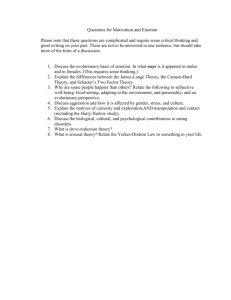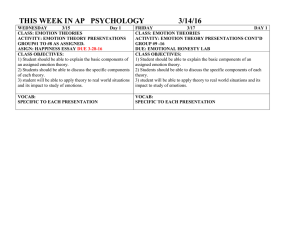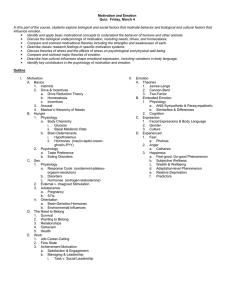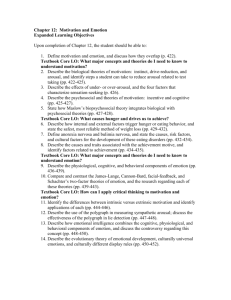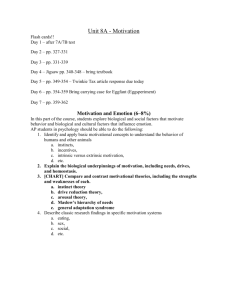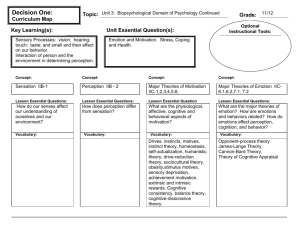MOTIVATION & EMOTION REVIEW
advertisement
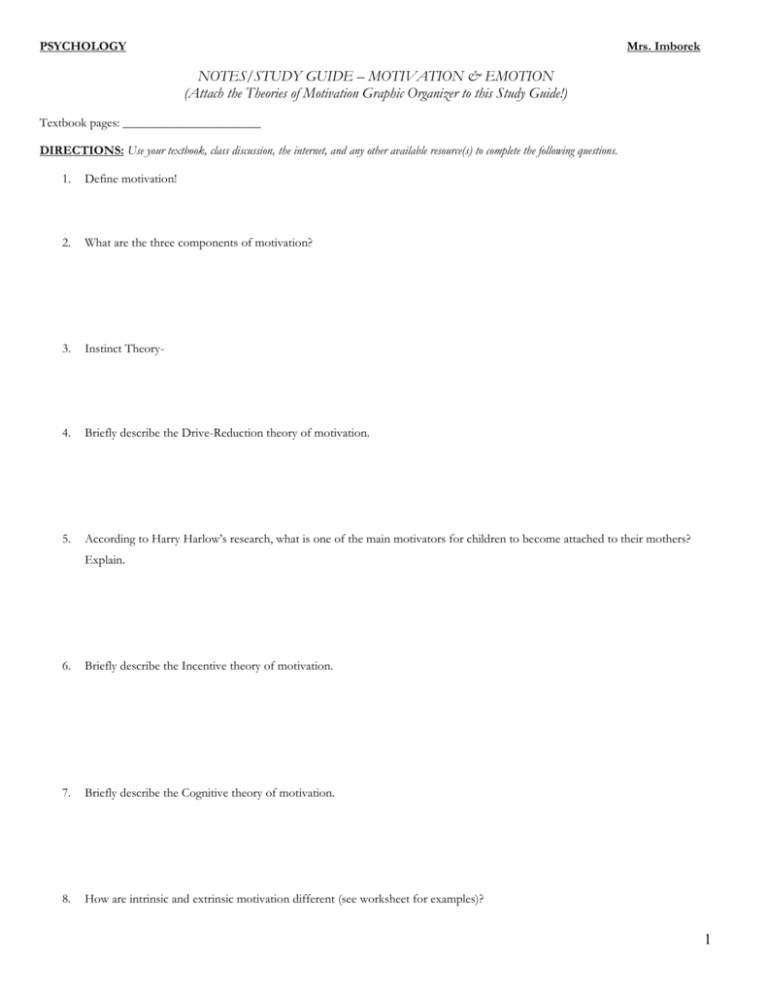
PSYCHOLOGY Mrs. Imborek NOTES/STUDY GUIDE – MOTIVATION & EMOTION (Attach the Theories of Motivation Graphic Organizer to this Study Guide!) Textbook pages: ______________________ DIRECTIONS: Use your textbook, class discussion, the internet, and any other available resource(s) to complete the following questions. 1. Define motivation! 2. What are the three components of motivation? 3. Instinct Theory- 4. Briefly describe the Drive-Reduction theory of motivation. 5. According to Harry Harlow’s research, what is one of the main motivators for children to become attached to their mothers? Explain. 6. Briefly describe the Incentive theory of motivation. 7. Briefly describe the Cognitive theory of motivation. 8. How are intrinsic and extrinsic motivation different (see worksheet for examples)? 1 9. Arousal Theories: A. Yerkes-Dodson LawB. Homeostasis- 10. How do biological needs and social needs differ(refer to worksheet when studying)? Give an example of each. 11. What is Need for Achievement and how can it effect your motivation? 12. How can the Fear of Failure impact motivation? 13. What is the purpose of Maslow’s hierarchy of needs? 14. Draw and Label Maslow’s hierarchy of needs 15. _________________+ ___________________= Behavior . 16. Define emotion. 17. How are motivation and emotion related? 18. What are the four components of emotion? 2 19. List and describe the differences between the Physiological and Cognitive theories of emotion 20. According to Paul Ekman, what are the universal facial expressions? How did he “discover” these? (describe his research.) How is the universality of these findings evidence that God exists? Motivation and Body Language: What percentage of our communication with other people is verbal? What is the importance of studying body language? How is this research applicable? 3


